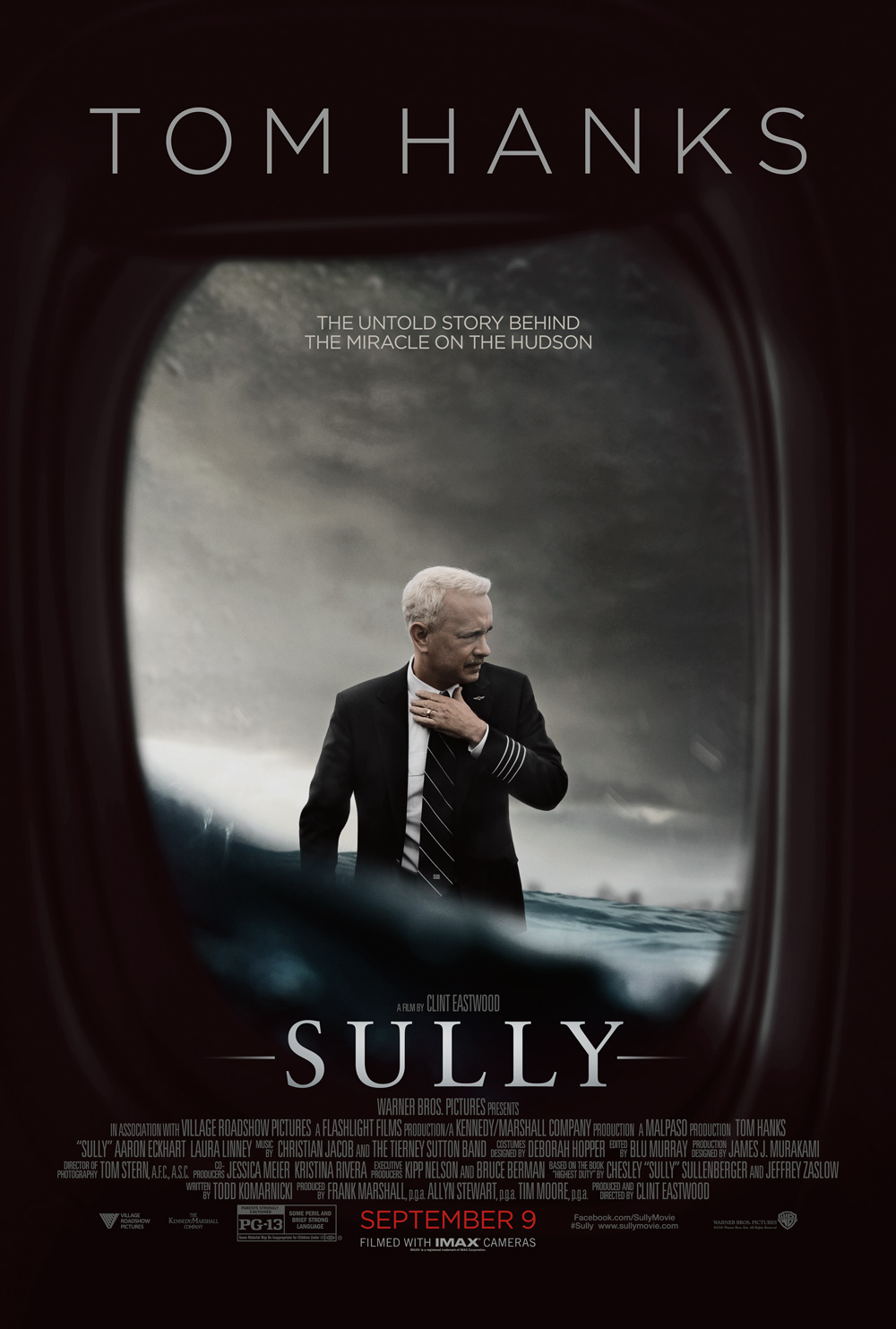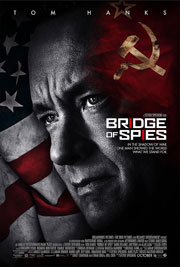Movie Review: “Inferno”
Posted by David Medsker (10/27/2016 @ 10:00 am)
Tom Hanks, Felicity Jones, Ben Foster, Irrfan Khan, Sidse Babett Knudsen, Omar Sy, Ana Ularu
Ron Howard
It’s been seven years since the world last saw a film based on author Dan Brown’s renowned symbologist Robert Langdon. The last installment, “Angels & Demons,” had a worldwide box office gross nearly $300 million less than its predecessor, “The Da Vinci Code.” That sounds bad, but to be fair, “Angels” still took in nearly half a billion dollars, so even if the idea of a Langdon film in 2016 seems unthinkable for a number of reasons (time, diminishing returns), money clearly did most of the talking when it came to green lighting the latest film, “Inferno.” And for a while, the movie distances itself from the first two films thanks to a breakneck opening pace, only to turn into the Dan Browniest Dan Brown adaptation to date halfway through and grind to a screeching halt.
Robert Langdon (Tom Hanks) wakes up dazed in a hospital, suffering from head trauma and trying to put together the missing pieces between the present and his previous memory from three days earlier. Almost immediately after he wakes up, there is an attempt on his life by a policewoman, but Robert’s attending physician, Dr. Sienna Brooks (Felicity Jones), helps him escape and brings him to her apartment, where Robert discovers that in the pocket of his coat is a vial used to transport lethal pathogens.
Inside the tube is a clue left for Robert by billionaire Bertrand Zobrist (Ben Foster), who’s known for his incendiary speeches warning against the overpopulation of the planet and the need for a correction in order to prevent the complete extinction of the human race. Robert concludes that Bertrand, who committed suicide two days earlier, has created and hidden a deadly virus designed to “solve” the overpopulation problem, but in his search for the clues to find the virus, Robert has the police, a compromised World Health Organization and a third party of questionable intent hunting him at the same time.
Read the rest of this entry »
Movie Review: “Sully”
Posted by Jason Zingale (09/08/2016 @ 10:00 am)
Tom Hanks, Aaron Eckhart, Laura Linney, Mike O’Malley, Anna Gunn
Clint Eastwood
On January 15, 2009, commercial airline pilot Captain Chesley “Sully” Sullenberger safely landed US Airways Flight 1549 in the middle of the Hudson River when the plane struck a flock of geese shortly after takeoff, causing both engines to fail. It took the combined efforts of Sully’s crew and over 1,000 first responders in New York City and New Jersey to ensure the safety of all 155 passengers. But director Clint Eastwood’s big screen adaptation of the famous incident opens with an alternate version of the crash – one that ends in a fiery (and eerily familiar) explosion into the side of a New York City skyscraper. Why risk the fury of moviegoers with such distressing 9/11 imagery? Because it shows how differently it could have ended without Sully’s heroic act, and in doing so, gets the audience firmly behind its subject from the start.
The film begins several weeks after the so-called Miracle on the Hudson, with Sully (Tom Hanks) and his crew, including First Officer Jeffrey Skiles (Aaron Eckhart), making the talk show rounds to discuss their experience. Unbeknownst to the general public, there was an investigation taking place behind closed doors with the National Transportation Safety Board in order to determine whether Sully’s “forced water landing” (he refuses to use the word “crash”) was justified or reckless. So when a computer simulation of the accident reveals new data that suggests the airplane could have made it back to LaGuardia or Teterboro Airport without injury to any of the passengers, it casts a shadow of self-doubt on the experienced pilot, who’s already under an immense amount of pressure between the ongoing investigation, the numerous media commitments and financial problems at home, not to mention the PTSD caused by the incident itself.
Read the rest of this entry »
Movie Review: “Bridge of Spies”
Posted by David Medsker (10/15/2015 @ 12:00 pm)
Tom Hanks, Mark Rylance, Amy Ryan, Alan Alda, Austin Stowell
Steven Spielberg
Certain things go together. Peanut butter and chocolate. Jack and ginger (yes, ginger, not Coke. Try it). “Bridge of Spies,” on the other hand, is proof positive that Steven Spielberg (the film’s director), and Joel and Ethan Coen (the film’s co-screenwriters), absolutely do not go together. In fact, this would have been a much better movie had the Coens directed it themselves. There are these subtle, effective and surprisingly funny moments that are clearly the Coens’ work, and then Spielberg steps in and drowns everything else in syrup. That it remains a watchable movie is in spite of Spielberg’s efforts, not because of them.
It is the late ‘50s, and Cold War paranoia is at an all-time high. The FBI captures Brooklyn resident, and Russian spy, Rudolph Abel (Mark Rylance), and the government assigns a local law firm to represent him. The case is assigned to James Donovan (Tom Hanks), even though he is primarily an insurance lawyer. James quickly realizes that no one is interested in giving Rudolph a fair trial, which only leads James to fight even harder to get him one, regardless of the hardships that may mean for him and his family. He loses, but successfully lobbies to pardon Rudolph from getting the death penalty, arguing that the U.S. would be wise to keep him around as a bargaining chip.
Sure enough, James proves to be right, as American pilot Gary Powers (Austin Stowell) is captured after his U-2 spy plane is bombed out of the sky by the Russians, and he is sentenced to hard labor in a Russian prison. The U.S. government asks James if he can negotiate an unofficial trade with the Russians to swap Rudolph for Powers. James is game, but he wants to sweeten the deal by also getting the Russians to convince the German Democratic Republic – who are building the wall between East Berlin and West Berlin as these events are taking place – to also release Frederic Pryor (Will Rogers), an economics student that the GDR has falsely accused of espionage in the hopes that they will get invited to the political big boy table.
Read the rest of this entry »
Potential 2014 Best Picture Nominees
Posted by Bullz-Eye Staff (12/17/2013 @ 10:18 am)
With the full Academy Award nominations due January 16, 2014, the time has come to start sizing up favorites for the Best Picture Oscar. Voters’ tabulations will determine between five and ten films up for the top prize. From familiar directors and stars to surprising breakout performances, this year’s crop features these films and any of a number of other dark horses. On March 2nd, the Oscars will be broadcast on DirecTV Chicago and through many other U.S. cable providers.
12 Years a Slave
The epic narrative about slavery stars Chiwetel Ejiofor as a free African American man from the north who is kidnapped and sold as a slave, while Benedict Cumberbatch plays the plantation master in Louisiana who purchases him. Michael Fassbender, Sarah Paulson, and Paul Dano also star in this gripping true story, directed by Steve McQueen (director of Shame).
Read the rest of this entry »
Movie Review: “Saving Mr. Banks”
Posted by David Medsker (12/12/2013 @ 7:00 pm)
Emma Thompson, Tom Hanks, Colin Farrell, Paul Giamatti, Bradley Whitford, Jason Schwartzman, B.J. Novak
John Lee Hancock
The trailer for “Saving Mr. Banks” resembles the film only slightly more than “The Shining” resembles that fake trailer for the film that made the rounds 10 or so years ago. In the trailer, “Mr. Banks” looks light and fun, with a little playful back-and-forth between the frigid, overprotective writer and the movie executive who’s looking to turn her pet project into box office gold. Nora Ephron made this movie with Meg Ryan four or five times (twice with “Banks” star Tom Hanks, strangely enough), and we all know that it ends with the two finding some middle ground while learning to be more understanding of others.
Except that this movie isn’t even remotely like that. Instead, “Saving Mr. Banks” is a dark, painfully sad journey of a grown woman still looking to redeem her long-lost father, occasionally broken up by moments of levity. This makes for a more emotionally complex story, which is a nice surprise, but it doesn’t always make for a better story. The flashback timeline is informative, but the present day timeline is more interesting.
It is the year 1961, and P.L. Travers (a spot-on Emma Thompson) has been fielding calls from movie mogul Walt Disney (Tom Hanks) for 20 years about adapting her book “Mary Poppins” for the silver screen. Her answer has always been a steadfast ‘no,’ but when a financial adviser friend of hers reminds her that she’s almost out of money, Mrs. Travers agrees to fly to Los Angeles, meet with Walt, and consider the possibility of allowing Disney and his team to work their “magic” on her beloved Mary. From the beginning, though, Mrs. Travers has objections to their treatment of the material, and in flashback, we see why: as a young girl in rural Australia in the early 1900s, Mrs. Travers had a wonderful relationship with her father (Colin Farrell), an otherwise unreliable and occasionally foul-tempered drunk who nonetheless adored his eldest daughter “Ginty” and encouraged her to think creatively. She lost him at an early age, and she’s clearly still stinging from the loss, and the fact that Disney and his staff doesn’t understand what “Mary Poppins” means to her, in both a literal and figurative sense, infuriates her.
Read the rest of this entry »














